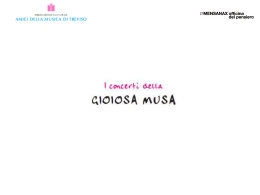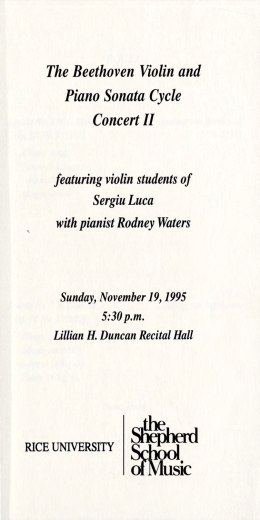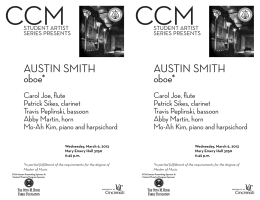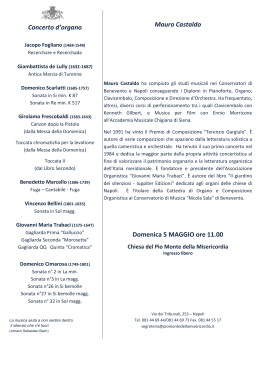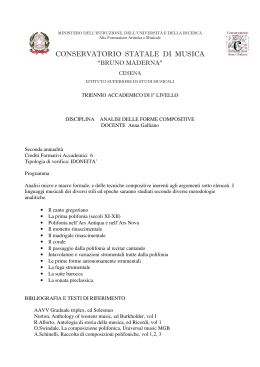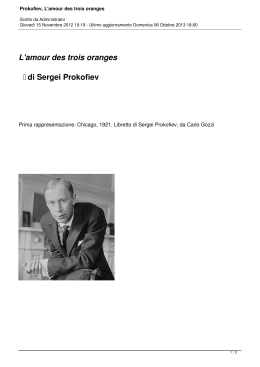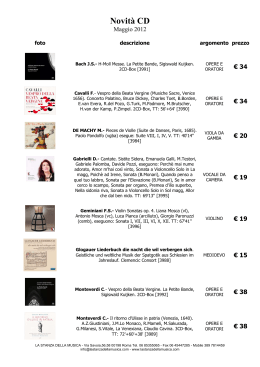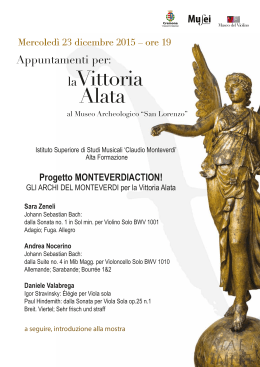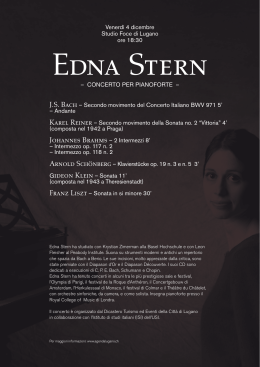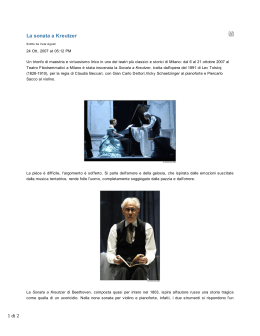Sharipa Tussupbekova Nata ad Almaty, Kazakhstan, nel 1995, Sharipa Tussupbekova ha iniziato lo studio del violino all'età di quattro anni. Si è formata alla scuola di musica "Tulebaev" di Almaty. Successivamente si trasferisce in Italia per studiare all'Accademia Internazionale di Imola "Incontri con il Maestro" sotto la guida del M° Pavel Berman. Contemporaneamente frequenta l'Istituto Musicale Pareggiato "G. Lettimi" di Rimini, dove consegue il diploma col massimo dei voti, la lode e la menzione d’onore nel giugno 2013. Sharipa si è perfezionata con grandi maestri di fama internazionale fra cui: Zachar Bron, Pierre Amoyal, Mikhail Kopelman, Ivry Gitlis, Marie TampereBezrodnaya, Stefan Gheorghiu ed altri. Attualmente si sta perfezionando al Conservatorio della Svizzera italiana nella classe del M° Pavel Berman nell’ambito del Master of Arts in Music Performance. Sharipa ha vinto diversi premi in numerosi concorsi nazionali ed internazionali. Da ricordare il I premio nel 2006 al “Concorso Internazionale per giovani violinisti” a Novosibirsk in Russia ed il I premio al concorso "Jeunesses Musicales" a Bucarest in Romania. Tiene regolarmente concerti esibendosi sia come solista in orchestra, sia in varie formazioni cameristiche. S. Prokofiev 1891 – 1953 Sonata n°1 in Fa minore op. 80 per violino e pianoforte I. Andante assai II. Allegro brusco III. Andante IV. Allegrissimo - Andante assai, come prima N. Rimsky-Korsakov 1844 – 1908 E. Zimbalist 1889 – 1985 roberto arosio _pianoforte The Golden Cockerel Fantasy (1945) per violino e pianoforte "Nothing written for the violin in many decades - anywhere in the world, could equal this piece in beauty and depth. I can make that statement without the slightest exaggeration." David Oistrakh Sergei Prokofiev (1891 - 1953) was a Russian composer, pianist and conductor. As the creator of acknowledged masterpieces across numerous musical genres, he is regarded as one of the major composers of the 20th century. After hearing a Handel violin sonata, S. Prokofiev decided to try composing in this musical genre which he had never before attempted. S. Prokofiev began to compose Violin Sonata N.1 in F minor, op. 80 in 1938, but didn't complete it until 1946, an eight-year interval that spans all of World War II. Despite many personal vicissitudes, this was a fruitful period for Prokofiev, one that included his opera "War and Peace", the monumental Piano Sonatas No. 6-8 the so-called "war sonatas"), and the fifth and sixth symphonies. This sonata does follow the outline of a Baroque church sonata with its four-movement structure, slow-fast-slow-fast. All four movements are almost equally long, but S. Prokofiev said that the first served as a kind of extended introduction to the second, being a haunted prelude that ends with whispering muted scales that should sound “like the wind in a graveyard”. The second movement is a vigorously brawling debate, approximately the argument of the Classical sonata form. The third movement is a warmly rocking lullaby, although it does not keep all the ghosts at bay. The finale is a folk dance in shifting meters, driven in the composer’s characteristically biting toccata style, though it ends serenely after a recollection of the “wind in a graveyard” from the first movement. Violin sonata n.1 in F minor, op. 80 is one of the darkest and most brooding of the composer’s works. S. Prokofiev dedicated this sonata to David Oistrakh, who, together with Lev Oborin, gave it its premiere in 1946. Efrem Zimbalist (1889 – 1985) Was an internationally known concert violinist virtuoso, composer, teacher, and conductor. Zimbalist studied under Leopold Auer. His composition class teacher was N. Rimsky-Korsakov. By age 21 was considered one of the world's greatest violinist. There are many transcriptions of famous arias and fantasies on themes from popular operas for every instrument, but the violin, with its singing tone, lent itself particularly well to the operatic style. Many outstanding violinists made their contributions to the genre. In any survey of the opera literature, Russian opera cannot be ignored. Efrem Zimbalist was in the audience when opera "The Golden Cockerel" by N. Rimsky-Korsakov (1844-1908) premiered in New York in 1918, and was inspired to arrange some of its music as a violin showpiece with piano accompaniment called "Fantasy on themes of N. Rimsky-Korsakov’s opera The Golden Cockerel". The Golden Cockerel is an opera in three acts (with short prologue and even shorter epilogue). The libretto was written by Vladimir Belsky and is based on the poem "The Tale of the Golden Cockerel" by Alexander Pushkin, written in 1834 and representing a peculiar “satirical portrait” of the rule of Nicholas I. Poem tells the tale of an inept ruler who fails to heed the warnings of a magical bird – the eponymous cockerel – in his lust for the Queen of Shemakha and meets an unhappy end. N. Rimsky-Korsakov decided to expand the fairy tale’s political accents even further and create a work exposing the disastrous tsarist regime. In 1906 he started work on his Golden Cockerel opera and finished it in 1907. The opera was immediately banned by the Palace, and was not allowed to be staged — the resemblance between Russian Tzar and the foolish tzar Dodon was too close. The Opera was premiered in Moscow only in 1909, thus after the composer's death. N. Rimsky-Korsakov created some of his most exquisitely sensual and thundering melodies to evoke a romantic Russian history. You could easily hear these enchanting melodies in Efrem Zimbalist's "The Golden Cockerel Fantasy".
Scarica
